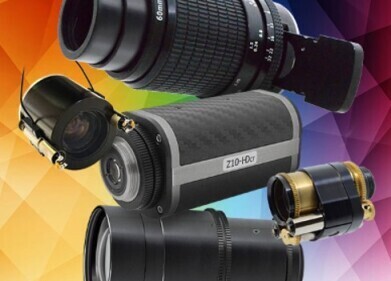Microscopy & microtechniques
Nanoparticle Tracking Analysis used to Characterise Nanoconstructs for Biomedical Applications
May 31 2012
NanoSight, leading manufacturers of unique nanoparticle characterisation technology, reports on the work of Professor Tuan Vo-Dinh's group at Duke University where they apply Nanoparticle Tracking Analysis (NTA) to characterise metal nanoparticle construct materials for use in biosensing, imaging and cancer therapy.
The Vo-Dinh Lab is a part of the Departments of Biomedical Engineering and Chemistry of Duke University. The Vo-Dinh Lab is also a part of the Fitzpatrick Institute for Photonics, of which Professor Vo-Dinh is the Director.
The main research goal of the group is to develop advanced techniques and methods to protect the environment (environmental sensors) and improve human health (medical diagnostics and therapy). As a part of these research goals, Dr Hsiangkuo Yuan and other members of Professor Vo-Dinh's group design and fabricate metal nanoparticle constructs such as gold nanostar platforms. These are characterised with UV-VIS, TEM, Raman microscope, fluorometers and other techniques. However, to design nanoconstructs for in vivo applications, the particle size needs to be in the range from 10 to 100nm for lower clearance from the kidney and reticuloendothelial system (RES). It is important that the construct is in the right size range and is physiologically stable (non-aggregated) for biomedical applications in, for example, optical imaging or nanodrug delivery where it is also critical that the nanoparticle dose administered can be determined. To compare plasmonic properties, such as the enhanced electromagnetic properties of nanoparticles, they need to determine the effect of different sizes and to understand in detail the profile of the particle size distribution of similar concentrations which can be obtained using NanoSight's NTA system.
Prior to NTA, the group mostly used TEM to look at particle shape and measure particle size. The surface coating or the aggregation state cannot be easily investigated using just TEM. NanoSight provides a significant complementary role on providing hydrodynamic size distribution and zeta potential. Moreover, because NanoSight gives the concentration information, it allows them to normalise their comparison by individual particle counting which was quite difficult to obtain previously.
Digital Edition
Lab Asia Dec 2025
December 2025
Chromatography Articles- Cutting-edge sample preparation tools help laboratories to stay ahead of the curveMass Spectrometry & Spectroscopy Articles- Unlocking the complexity of metabolomics: Pushi...
View all digital editions
Events
Jan 21 2026 Tokyo, Japan
Jan 28 2026 Tokyo, Japan
Jan 29 2026 New Delhi, India
Feb 07 2026 Boston, MA, USA
Asia Pharma Expo/Asia Lab Expo
Feb 12 2026 Dhaka, Bangladesh
.jpg)
-(2).jpg)
















